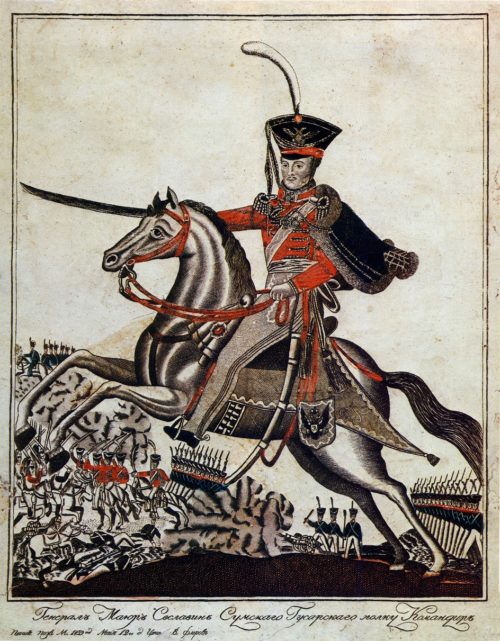
Russian Lubok is a type of fine art, also known as folk picture, characterized by clarity and image capacity. Lubok often had decorative purpose, the word ‘lubok’ derives from lub – a board that pictures were painted on. Lubok often contains a detailed explanatory inscriptions, often moral, or wisdom. Cheap and simple books which mostly consisted of pictures, are called lubok literature. Favorite subjects of Russian lubok are images of the mythological women-birds of paradise Sirin and Alkonost.

hose pictures were sold on the bridge at the Spassky Tower. These pictures were called folksy. Some believe that they were called lobok due to the fact that traders had on their back boxes made of lubok – bottom layer of the bark of a tree. But others argue that this is due to the fact that the first such pictures were printed on linden boards, and in the old days linden was called lubok.
To draw and cut out the board could folk artists – masters. They were taught by their parents, relatives and neighbors. And mainly training popular artists was the same as it was in the whole Russian folk art: everything that is done by human hands, everything has to be not only useful, but also be sure to please the man. Since life with joy – the main purpose in life.

These pictures were often accompanied by legends. According to the text on sheets women-birds sing so sweet that the person hearing it, forgets about everything and goes for it, unable to stop until he dies. Artists usually depicted the person fascinated listening to the birds sitting on a huge bush with flowers and fruit, and a little below was the victim lying dead on the ground. To get rid of the bird, people scare it with noise: beat drums, blow the trumpets, ring bells, shooting. Terrified by the unusual noise and sound, Sirin was forced to fly away.
In the picture is shown that about the bed of the deceased righteous are angels, one of whom takes his soul, the second records his good deeds, and the third throws out demons, powerless to do anything with the righteous. About a sinful man is opposite: the angel sheds tears standing in the distance, one devil reads out evil deeds of the deceased, and the other gets from the body his soul with a long hook. Depicting the death of the righteous and sinners, was meant the poor and the rich man.

Pictures with edifying stories and parables from various literary collections occupy a large place in the art of hand-drawn lubok. They interpreted the theme of moral behavior, virtuous and vicious human behavior, the meaning of human life, denounced the sins, tells about the torments of sinners after death.
In some pictures interpreted the idea of redemption and overcoming sinful behavior during the lifetime, to praise moral behavior. In this respect, is an interesting story, “Spiritual Pharmacy”. Parable, taken from the writings of “spiritual medicine” – a cure for sins through good deeds – is revealed in the words of a doctor who gives a man came to him the following advice: “Come and take root and leaves of obedience patience, the color of purity, the fruit of good deeds and mix in the boiler of silence … eat it and you will be be completely healthy”








